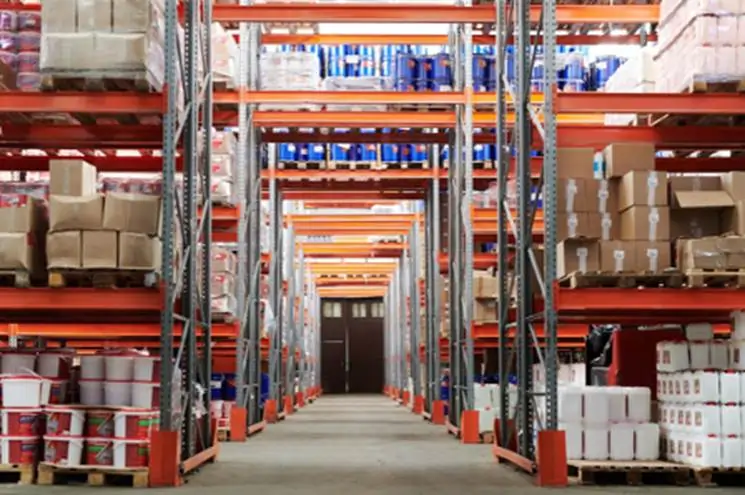In today’s fast-paced e-commerce world, effective warehouse management is a key determinant of success. Businesses are more pressured to streamline their operations than ever due to the booming online shopping and customers’ expectations for faster delivery times. However, with numerous activities being carried out simultaneously in such a large space, many businesses, especially small e-commerce stores, struggle with the complexities of warehouse management.
The good news is that there are dozens of ways to optimize warehouse operations and enhance your business’s bottom line. In this article, we’ll cover a few practical tips for effective warehouse management.
What are the most critical elements of a well-managed warehouse?
A well-managed warehouse ensures that inventory is stored, handled and dispatched with precision. To achieve this, the following critical elements should work together.
· Inventory accuracy: Inventory accuracy means knowing exactly what is in stock and where it’s located. Poor tracking leads to delays, overstock or stockouts. Track inventory in real time to ensure accuracy and prevent costly disruptions in your warehouse operations.
· Efficient layout: Your warehouse layout should support the fast movement of goods from receiving to storage, picking, packing and shipping. Having clear pathways, logical zones and smart product placement ensures no time is wasted and increases operational efficiency.
· Trained staff: Even the best systems will fail without skilled people. Train your staff on safety procedures, equipment usage and how to handle inventory. Well-trained employees reduce errors, speed up operations and keep the warehouse running smoothly.
· Technology: Modern warehouse management relies heavily on technologies such as IoT and AI. Technologies reduce human error, provide real-time visibility and streamline processes. Integrate them with logistics management and supply chain management systems for faster, smarter decisions.
What’s the best way to organize warehouse layout for efficiency?
The layout of a warehouse has a direct impact on productivity. A well-designed layout reduces travel time, prevents congestion and ensures goods flow smoothly from receiving to shipping.
When designing your warehouse layout, begin by analyzing the existing layout to identify bottlenecks, inefficiencies, areas of congestion and the products you handle frequently. Focus on the following:
· Flow: Design your warehouse in a way that products can logically move through all the stages of warehouse operations. For instance, the receiving area should be located near the storage area, while the picking and packing areas should be positioned close to the loading dock to minimize backtracking.
· Clear pathways: Aisles should be wide enough for equipment, such as forklifts, and always be free of clutter. This will help prevent delays and accidents. Utilize floor markings and signage to direct traffic and enhance safety effectively.
· Product placement: Where you store your items determines how fast they are retrieved and shipped. Store fast-moving items near the front of the picking zone to speed up order fulfillment: reserve rear or higher locations for slow-moving items that don’t need frequent access.
· Zoning: Group items based on size, type, turnover rate or handling requirements to make them easier to locate.
How can I maximize my existing warehouse space?
Here are a few steps you can take to maximize your current warehouse space.
1. Utilize vertical storage: If you have ample height, consider installing taller shelves, racking systems or a mezzanine to maximize your current space. That said, ensure your equipment and safety protocols are designed to handle higher-reach operations.
2. Switch to narrow aisles: Utilize narrower aisles to fit more racking into the same floor space. This works exceptionally well with specialized lift equipment and can significantly increase storage density while maintaining access.
3. Efficient racking: Choose racking systems based on your inventory type. Pallet flow, drive-in and push-back racks all offer different space-saving benefits.
4. Minimize wasted space: Look for areas that aren’t being used or are cluttered with obsolete inventory. Consolidate partially filled pallets, reposition products based on current demand and get rid of items that are not moving.
What technologies can significantly improve warehouse operations?
The right tools will improve your warehouse’s speed, accuracy, visibility and operational efficiency. Here are the most impactful technologies you can use:
Barcoding
Use barcodes to streamline inventory control. You can quickly and accurately scan items during receiving, picking and shipping. Barcoding reduces manual errors and keeps your inventory data up-to-date in real time.
RFID technology
Unlike barcodes, RFID (Radio Frequency Identification) tags don’t need direct line-of-sight to be scanned. RFID technology allows real-time, automated inventory tracking as it moves through your warehouse, boosting speed, visibility and accuracy.
Warehouse automation
Use warehouse automation tools such as conveyors, robotic arms and Autonomous Guided Vehicles (AGVs) to handle repetitive tasks. Automation reduces labor costs, speeds up order processing and minimizes errors during picking and packing.
Data analytics
Use data analytics to monitor performance, predict demand and pinpoint inefficiencies. Warehouse management systems (WMS) and labor management systems (LMS) can further enhance this process.
IoT
IoT (Internet of Things) devices like smart sensors and connected machines offer real-time insight into warehouse conditions such as temperature, humidity, and equipment performance. These tools enhance visibility and help prevent issues before they disrupt your warehouse operations.
Bottom line
Managing a warehouse effectively requires a clear focus on inventory control, smart layout design, maximum space utilization and the right tech stack. If you get this right, you are more likely to reduce costs, improve speed and accuracy and boost customer satisfaction.
Read more: How Does Group Health Insurance Work – Dimensions Script
2FA for Gamblers: The 30-Second Setup That Saves Your Account
How I Cash Out Crypto Winnings Without Paying Huge Fees


